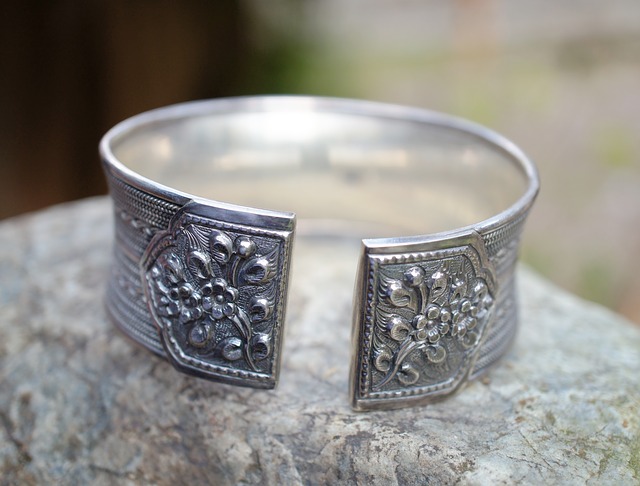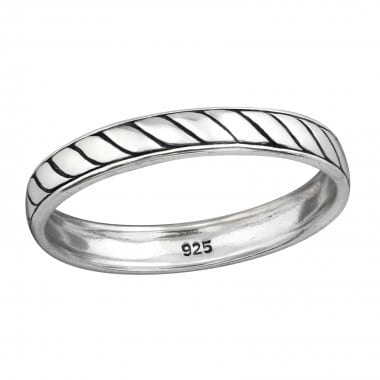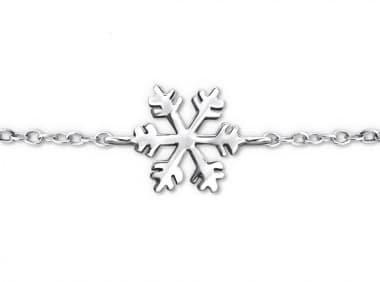Silver has a unique luster and shine, making it a good material for creating various jewelry pieces, particularly intricate designs. But pure silver is quite soft, just slightly harder than pure gold. Thus, it is easy to scratch and difficult to shape. Adding an alloy, such as copper, gives the metal additional hardness so that silver can retain its shape.
Sterling silver jewelry looks stunning, particularly when combined with precious and semi-precious stones, as the metal’s brilliance becomes enhanced by the gemstone’s color. If you collect sterling silver jewelry and want to pass them to future generations, you should know the essential facts about the metal and how to take care of them properly.
Sterling silver is a mix of two or more metals
 Many people may recognize sterling silver. However, not everyone knows that it is an alloy, meaning that pure silver is typically mixed with other metals. Sterling silver is a combination of silver and copper, and the highest quality has 92.5% of pure silver and 7.5% copper. Other metals can be added to silver, although copper is the most common.
Many people may recognize sterling silver. However, not everyone knows that it is an alloy, meaning that pure silver is typically mixed with other metals. Sterling silver is a combination of silver and copper, and the highest quality has 92.5% of pure silver and 7.5% copper. Other metals can be added to silver, although copper is the most common.
Sterling silver has assayer’s marks
You may have noticed that some sterling silver jewelry pieces have markings on the lock. These are assayers’ marks that indicate the origin or source of the silver. The mark could be a unique symbol, letter, or animal, signifying the country that manufactured the sterling silver. Famous jewelry makers like Tiffany & Co., Faberge, and others also have their particular symbol or hallmark. Aside from the manufacturers’ marks, you’ll find numbers representing the purity of the silver used in making the jewelry. For example, the number 925 denotes that the jewelry is 92.5 percent silver.
Pure silver is not as strong as sterling silver
Pure silver is quite soft and will not hold its shape as you wish. Because of its softness, it can easily sustain scratches and dents. Thus, it is not suitable for items, such as jewelry, which you will use frequently. Adding copper or other metals that work well with silver makes it harder, turning it into sterling silver. The addition of other metals makes silver harder and more durable so that the metals can be used for many items, such as cutlery and jewelry.
Sterling silver is prone to tarnish
While pure silver is resistant to oxidation, the addition of copper to harden and strengthen silver has a downside. Copper is prone to oxidation, causing sterling silver to tarnish. Thus, you may find that your fingers turn greenish when handling tarnished silver. If not removed, tarnish can cause irreparable damage to sterling silver. You can use a mixture of warm water and mild dishwashing liquid to remove the tarnish and use a soft cotton cloth or microfiber cloth to dry and polish the jewelry. Rub the jewelry gently to avoid scratching the metal.
Your skin reacts differently to some types of sterling silver
 Some people react to new jewelry differently, and people with sensitive skin may get a rash after wearing sterling silver jewelry. Many manufacturers use different processes to minimize irritation. One option is flashing, which applies a thin layer of pure silver over the sterling silver, giving the metal an unusually brighter luster. Another process is plating the sterling silver with nickel or copper. Finally, some manufacturers coat silver jewelry with rhodium, which helps make the metal tarnish-resistant.
Some people react to new jewelry differently, and people with sensitive skin may get a rash after wearing sterling silver jewelry. Many manufacturers use different processes to minimize irritation. One option is flashing, which applies a thin layer of pure silver over the sterling silver, giving the metal an unusually brighter luster. Another process is plating the sterling silver with nickel or copper. Finally, some manufacturers coat silver jewelry with rhodium, which helps make the metal tarnish-resistant.
Correct storage can prevent tarnishing
Regular gentle polishing is essential to keep sterling silver clean and shiny. But it is likewise important to know how to prevent tarnishing. One of the enemies of sterling silver is humidity. Therefore, storing sterling silver jewelry in jewelry boxes lined with felt is best. If you do not have a felt-lined jewelry box, add silica packets, chalk, or activated charcoal to the jewelry box. Place the box in a cool, dry place. You can also use anti-tarnish bags. If you are storing it for a long time, remember to polish your sterling silver jewelry at least twice a year.
Sterling silver is delicate, so it needs proper care to maintain its luster. Keep your jewelry away from substances such as lotions, perfumes, bleach, saltwater, hair spray, and other things with chemical ingredients. Be sure to wipe your sterling silver jewelry with a soft cloth after using it.

